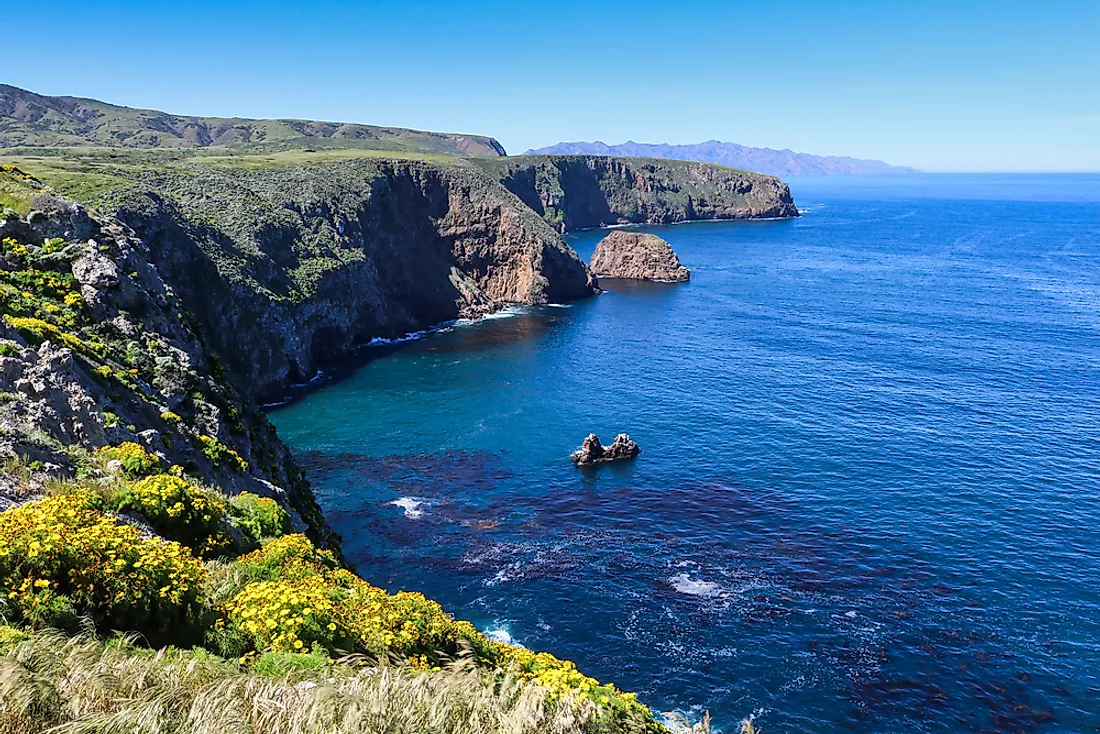Where are the Channel Islands?

The Channel Islands are situated on an archipelago which stretches 160 miles into the Pacific Ocean. The entire archipelago occupies an area of 346 square miles or 221,331 acres. The eight islands that make up the Channel Islands are categorized into two distinct groups; the northern Channel Islands and the southern Channel Islands, each with four islands. The northern Channel Islands include Santa Cruz Island, Santa Rosa Island, Anacapa, and San Miguel, while the southern Channel Islands are comprised of Santa Catalina, San Nicolas, San Clemente, and Santa Barbara. Santa Cruz is the largest of the Channel Islands and occupies an area of 96.51 square miles while Santa Barbara is the smallest and covers an area of 1.02 square miles. The highest point in the Channel Islands is the summit of Devils Peak situated on Santa Cruz Island which has an elevation of 2,429 feet above sea level.
History
The northern Channel Islands were originally part of an ancient landmass known as Santa Rosae. This prehistoric landmass is believed to have been about 77.67 miles in length at its largest. Another island known as Calafia Island is believed to have been part of Santa Rosae before rising sea levels submerged the Island. Santa Rosae began shrinking about 20,000 years ago as most of the island was submerged into the Pacific Ocean after melting glaciers caused the sea levels to rise by about 100 meters, until about 9,000 years ago when the landmass was broken up into the four islands that are present today. The Channel Islands have the earliest evidence of human settlements in North America after the discovery of a 13,000-year-old human fossil known as “Arlington Springs Man,” the oldest human fossil yet discovered in North America. From the discovery of the fossil, archeologists believe that the Channel Islands was inhabited by Paleocoastal people who moved into the islands on boats as the Channel Islands were not connected to the mainland. The Paleocoastal inhabitants established thriving societies in the islands and engaged in fishing and hunting for sustenance. These ancient inhabitants lived in the Channel Islands until they disappeared 8,000 years ago. Historians believe that the Paleocoastal people were the ancestors of the Chumash tribe who lived on the islands for thousands of years. The Chumash people lived in the northern Channel Islands, while members of another tribe known as the Tongva resided in the southern Channel Islands. The two tribes were later expelled from the Channel Islands by European immigrants who moved to the islands in the early 19th century.
Flora and Fauna
Archeologists have excavated remains of pygmy mammoths which once lived on the Channel Islands before their extinction some 13,000 years ago. The Channel Islands are recognized as having one of the richest ecosystems in the world and is home to hundreds of plant and animal species. The islands are the origin of the San Clemente Island Goat as well as the Santa Cruz Sheep. Many marine mammals reside in the waters surrounding the Channel Islands, and these include gray whales, California sea lions, blue whales and humpback whales. Underwater forests of giant kelp are found in waters surrounding the islands. The Torrey Pines (the rarest pine species in the US) are also found in the Channel Island.











